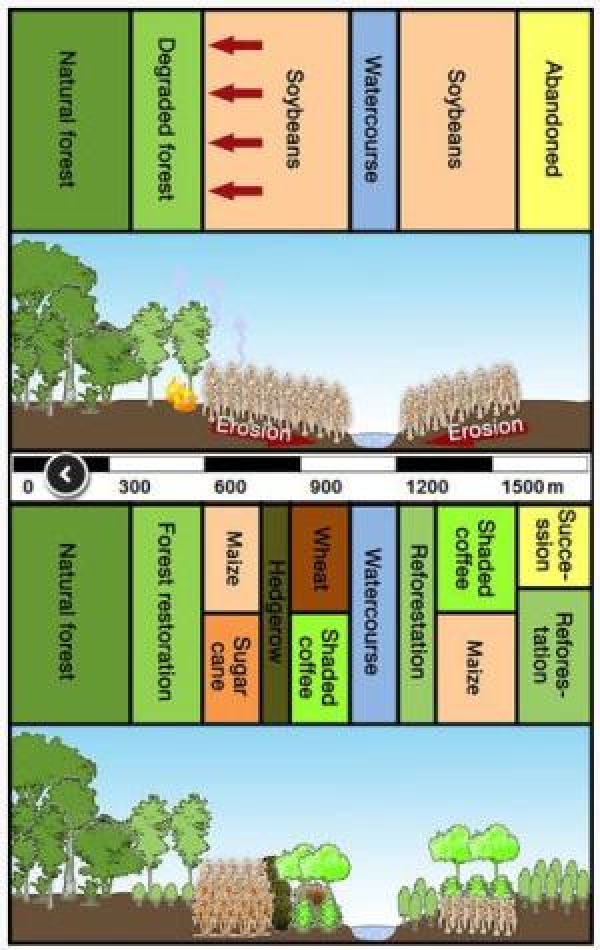Each year, huge carbon stores are lost as a result of deforestation. In South America, around four million hectares of forest are cut down every year. As a result, international climate protection programs are planning to financially compensate farmers who preserve forests or plant new trees. Demand for land is rising, however. And growing need for food and energy crops will inevitably lead to conflicts of interest over fertile land in countries such as Brazil and Ecuador.
Thomas Knoke and Michael Weber at Technische Universität München (TUM) firmly believe that intensive, high-yield agricultural practices can go hand-in-hand with climate and environmental protection. The two scientists and their colleagues have developed a "diversified land-use" concept for medium-sized holdings in South America based on an idea originally developed by retired TUM professor, Wolfgang Haber. The new concept encourages farmers to move away from large-scale monocropping and plant a mix of field crops on smaller plots, while at the same time setting aside part of their land for forests and hedges. Any unused land will be reforested. The smaller plots of farmland will still be large enough for intensive farming practices using fertilizers, planting machines and harvesters. The interspersed wooded areas and hedges will protect the soil from erosion and serve as long-term carbon stores.
Knoke and Weber have evaluated the economic viability of their concept based on a typical medium-sized agricultural holding. This model hacienda comprises an area of over 116 hectares and includes croplands, wooded areas and unused land. There are around five million family-owned farms of this size on the South American continent.
Adopting this sustainable method of intensive farming initially means higher costs for farmers due to reforestation and the division of land into individual plots. However, the combination of woodland management and smaller plots of land pays off in the long term. Working lots of individual plots enables farmers to diversify and spread risk -- in much the same way as smart investors. By growing a broader portfolio of crops such as soya, sugar cane, corn and coffee, they can reduce their dependency on price fluctuations. The wooded areas also provide extra income. Smaller material from forest thinning can be used as firewood, while larger logs can be sold as building material. Depending on the crops harvested, a farm modeled on the diversified land-use method will achieve higher returns than a monocrop farm in eight years at the latest. Farmers working this new model can achieve between 19 and 25 percent more yield than they would with large-scale monoculture.
To ease the transition to diversified land development, Knoke and Weber are lobbying for start-up funding and knowledge sharing. "The associated costs, however, are the same or less than comparable measures aimed at reducing CO2 levels," explains Professor Knoke from the TUM's Institute of Forest Management. "Which makes diversified land development in line with local dynamics an effective approach to ensuring highly productive yet climate-friendly agriculture."
Source: Science Daily
Published on: 11/08/2012

